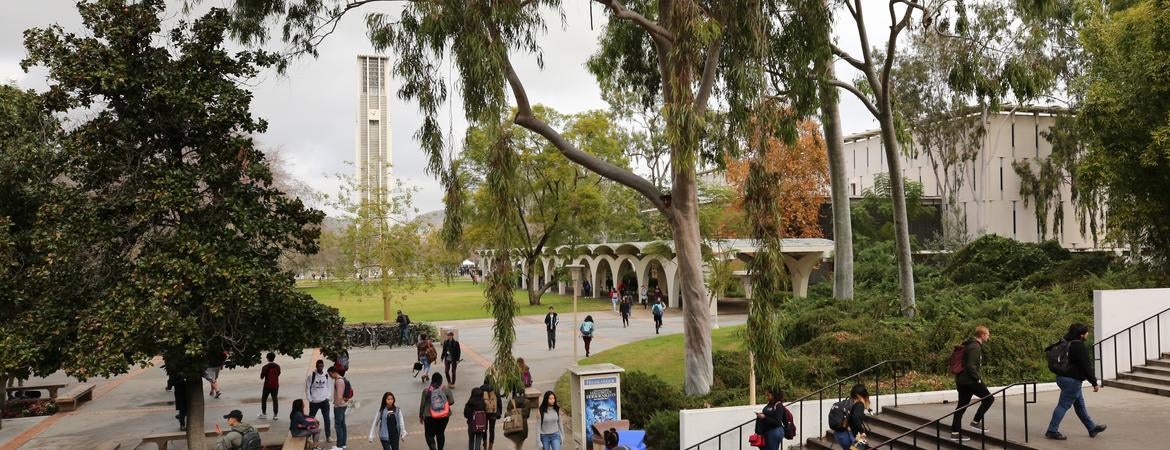
UC Riverside has again been named among the nation’s leading universities in terms of social mobility. UCR is No. 4 among 614 U.S. universities in a recent ranking by Education Reform Now, or ERN, a nonprofit advocacy group.
For the past two years, U.S. News & World Report, which publishes the nation’s leading college rankings list, has named UCR the No. 1 university in the nation for social mobility. Social mobility is a measure of the degree to which universities lift graduates into higher income brackets.
“UCR is now consistently acknowledged as one of the nation’s leaders in a category that lies at the heart of our mission: social mobility,” said Kim A. Wilcox, UCR’s chancellor. “Education Reform Now’s list is meaningful because it not only ranks universities in terms of their social mobility performance, it also holds accountable those in higher education who aren’t answering the challenge.”
Editors of ERN’s “social mobility impact ranking,” published this month, said they aim to acknowledge “colleges and universities that are providing both access and successful outcomes to large numbers of students, transforming not just their lives, but their communities and the nation as well.”
“The provision of social mobility opportunities has been an important objective of higher education,” said Steve Brint, a UCR distinguished professor and expert in American higher education. “UC Riverside enrolls as many Pell Grant students as all eight of the Ivy League schools combined.”
A key element of gauging social mobility success is how many students graduate who have received a Pell Grant, typically awarded to students from households earning less than $65,000 per year. ERN asserts that only some universities both enroll and graduate large numbers of Pell Grant students. “Students need degrees,” ERN editors wrote.
And so, some universities that do exceptionally well at graduating Pell Grant students scored low in ERN’s ranking because they don’t enroll many of those students. That includes many leading public and private universities, including Stanford, Harvard, Princeton, and Yale.
The ERN list considered 614 colleges and universities that grant bachelor’s degrees. To be included, universities had to graduate more than 50% of their Pell Grant students; have fewer than 6.9% of students default within three years of entering repayment; and have 75% of students paying down their federal loans within five years of entering repayment. Those three measures were considered in compiling the rankings.
Public universities dominated the rankings, claiming 90 of the top 100 spots on the list.
UC Riverside had a significantly higher Pell Grant graduation rate than the top three universities on the ERN list, with 74.7% of its Pell Grant students graduating. But UCR had fewer overall Pell Grant students than the top three: Cal State Long Beach, University of Central Florida, and Cal State Fullerton. All three universities enroll at least 10,000 more students each than UCR.
UCR finished above several other high-ranking UC schools, including UC Irvine, No. 5; UC Davis, No. 8; UC San Diego, No. 11; and UCLA, No. 12.
In its ranking, ERN editors condemn selective universities with large endowments, writing: “For the select few low-income and even middle-income students who get into these prestigious institutions, the payoff can be very large indeed. The problem is, too few are admitted and enrolled.”
“High prestige schools, like the ultra-selective schools with acceptance rates in the single digits, receive a disproportionate amount of media attention and dominate conversations about higher education, while the biggest social mobility elevators want for attention and, too often, funding. … The time has come to lift up the institutions that do more to lift up students,” the editors continued.
Brint attributes the imbalance to media bias toward Ivy League schools.
“Faculty members at those schools produce outstanding research and scholarship, but the schools do comparatively little to improve the mobility opportunities of their students because their undergraduate populations are small and most of their students come from affluent homes,” said Brint, who in 2018 published “Two Cheers for Higher Education: Why American Universities Are Stronger Than Ever — and How to Meet the Challenges They Face.” “The outstanding work of schools like UCR in this area fails to capture the attention of the national media because of the virtual monopoly on headlines enjoyed by the highly selective schools that members of the national media have themselves very often attended.”
In addition to the No. 1 U.S. News social mobility rankings in 2019 and 2020, related accolades for UCR include having been named the No. 1 most transformative university by Money Magazine; No. 12 public university in Forbes magazine’s “America’s Best Value Colleges” list; and No. 14 in CNBC’s “50 Colleges that Pay Off the Most” list.


